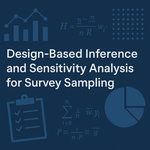Design-Based Inference and Sensitivity Analysis for Survey Sampling
Principal Stratification and Mediation
Interpretable and Validatable Uplift Modeling
Modes of Inference in Randomized Experiments
Sensitivity Analysis for Matched Sets with One Treated Unit
Sensitivity Analysis for Matched Pairs
Attributable Effects
The Reasoned Basis for Inference in Experiments
In his 1935 book, “Design of Experiments”, Ronald Fisher described randomization as the “reasoned basis for inference” in an experiment. Why do we need a “basis” at all, let alone a reasoned one?
Tests with One-Sided Noncompliance
Table of Contents
Introduction
Tech companies spoil data scientists. It’s so easy for us to A/B test everything. We can alter many aspects of the product from a configuration UI. We have the sample size to get a good read in as little as a few days. We have the data infrastructure to analyze and report results quickly.
Eglot+Tree-Sitter in Emacs 29
I’ve been an Emacs user for about 15 years, and for the most part I use Emacs for org-mode and python development. I’ve happily used Jorgen Schäfer’s elpy as the core of my python development workflow for the last 5 years or so, and I’ve been happy with it. Unfortunately the current maintainer, Gaby Launay, hasn’t had time to work on elpy for over a year now. In one sense this doesn’t matter: elpy is pretty stable; it’s open source so it can’t just disappear on me; and I feel comfortable making minor changes myself.






